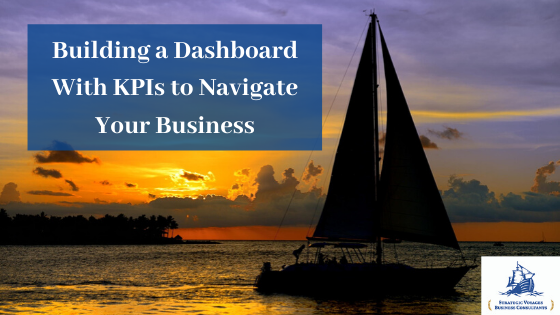Building a Dashboard With KPIs to Navigate Your Business
Building a Dashboard With KPIs to Navigate Your Business
I’ve been working with a data aggregation company over the past few months that LOVES big data. Their team is made of up SUPER SMART individuals who make pivot tables look like child’s play. All their clients get streamlined dashboards, know exactly what they need to do to make more money, and have crystal clear clarity on where their business is headed in real time. Sound like a dream come true? It could be your reality!
What this company has done is they’ve picked up a concept I first learned about in Business School at Judson; Gamification. They don’t call it that. But that’s what they’re doing. They’re gamifying business operations. Accenture (and many other global companies) are embracing this philosophy. Here’s a link to a blog that Accenture published about Gamification, if you’d like to read more about that specific topic. The gist of Gamification is that when complex business operations are boiled down into simple and “fun” metrics a few things happen:
- Competition is engaged
- Transparency triggers people to be motivated to improve their metrics
- Performance is tracked over time and decisions are made quicker
- Company’s goals are simplified and teams move forward as a unified unit.
- Non performing individuals are identified quickly and have the option to improve or leave
Sound like something your business could use? I bet! Many business owners I meet don’t already have something like this in place. Maybe they’ve never been able to articulate this concept exactly, BUT, they know they want this. My clients and I tend to work on building this over time. Clients don’t usually ask for a dashboard in the first conversation, but that’s where conversations lead due to a lack of solid information and measurement of business operations.
I love getting introduced to business owners. I have been building great relationships with Accountants, Attorneys, Bankers, and other Business Professionals who understand the value of needing a dashboard and want their clients to get one set up in their business. The things they see first (before they can even talk about a dashboard) is usually one or more of the following:
- Lack of cash (as a result of not forecasting their cash and bills)
- Financing needs (as a result of growing their company and needing new debt to do so)
- Operational deficiencies (as a result of not knowing what everyone is up to each day)
- Duplicitous efforts (as a result of not having a Functional Organizational Chart)
- Inconsistent sales (as a result of not having a clear Cost of Acquisition and Sales Strategy)
All of these reasons could be solved with creating a streamlined dashboard. Sounds easy enough. But, how do you make a dashboard for your business? Here are some of the steps necessary to do so in your business.
- The entire business operations needs to be mapped out
- Everyone needs to fully embrace operations and technology
- Functional steps need to be executed in a uniform method
- Leaders need to focus on the procedures and outcomes (this keeps the team accountable)
- The team needs to identify KPIs that make sense towards their goals.
*Simply put, KPIs are Key Performance Indicators and are the leading indicators to performance that directly impacts business results*
Now that we’ve reviewed the way to make the dashboard. What exactly are you supposed to be measuring? The first question you have to ask is: what is your business’s goal? No. Literally. What is the goal? Is it to improve productivity among a team? Is it to pay down debt? Is it to increase sales? Is it to improve efficiency of payroll to revenue generation? You have to answer the question of what your business’s goal. This is the end result. I’ve outlined several below.
After you think about the business goal (big picture) it’s time to literally write out the definition for your business of the measurement and then track the the smaller steps to getting there.
Productivity – If the goal is to improve productivity, you have to identify exactly how you want to measure this and then identify the steps. (see below for Operational KPIs).
Profitability – If the goal is to be more profitable, you have to think about exactly how this will be measured and then identify the steps to get there. (see below for Financial KPIs)
Efficiency – If the goal is to be more efficient, you’d have to clarify what that means for you. Many of my clients use the definition below.
Almost all the businesses I work with use some form of the following KPIs:
Financial KPIs
- Budget to Actual – Measured as a percentage of actual expenditures to projected expenditures (the budget). This helps keep everyone focused on the budget instead of thinking “there’s money in the bank, let’s spend it.”
- Balance Sheet Impact (my favorite) – Pulled from a specific time period. Measured as a dollar value that represents an improvement (reduction in debt) vs a regression (increase in debt) on the balance sheet.
- Cash Received to Projections – Measured as a percentage comparing the forecasted cash to be received vs what was projected. This helps improve operations / invoicing / and production when issues are identified.
Operational KPIs
- Operational Productivity – Measured as a percentage comparing direct labor plus direct costs compared to revenue generated. This helps focus on the efficiency of labor and material costs relative to the revenue generated.
- Production Effectiveness – Measured as a comparison of actual days spent between production milestones and expected (or the goal) days between milestones. You’d need to identify all the steps in your production process to have this milestone make sense for your business. This KPIs is really helpful for companies with long or complicated projects that span weeks or months.
General KPIs
- Business Efficiency – More of a global measurement that shows how efficient a business is at generating revenue as compared to all expenses. A drill down option for this is reviewing what other similar (publicly traded companies) use as a calculation for this measurement and seeing how you stack up
Many businesses have Industry Specific KPIs. What are some of the KPIs your business measures? I welcome the input!






1 Comment
[…] operations which starts with structure and predictability and usually looks like a dashboard. I recently wrote this article about building a dashboard. Business operations tells everyone who is supposed to do what by when, how do you know when […]